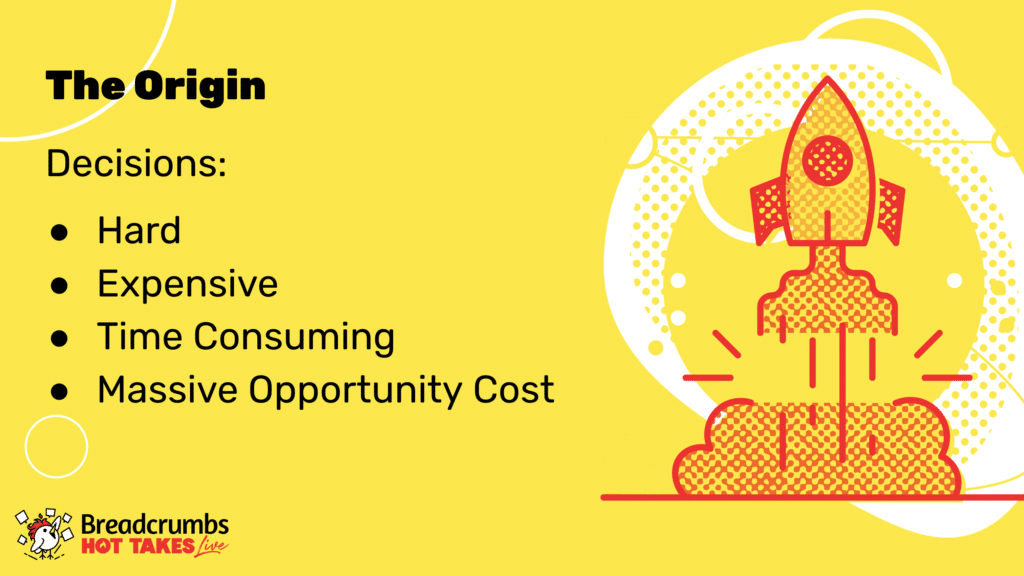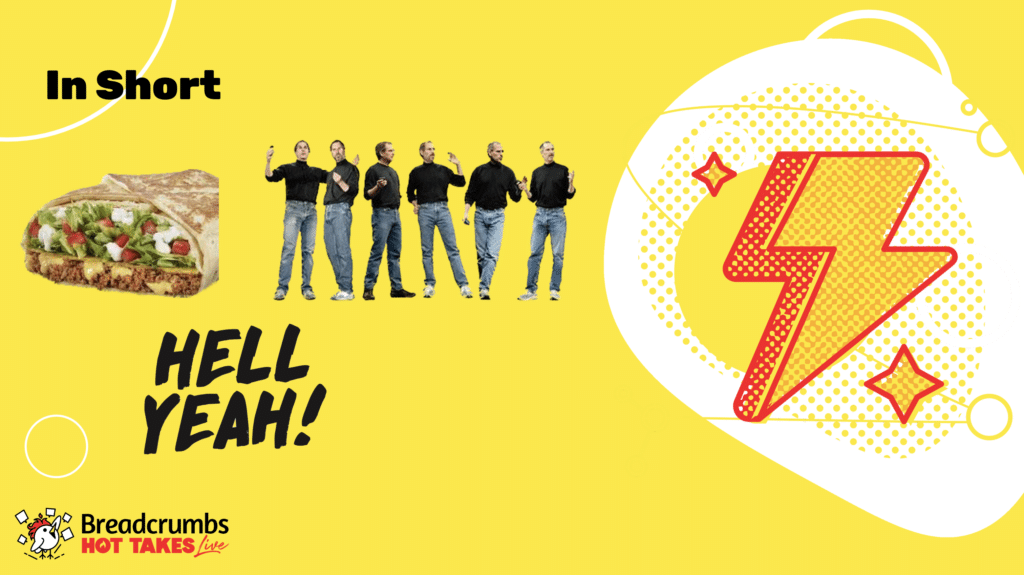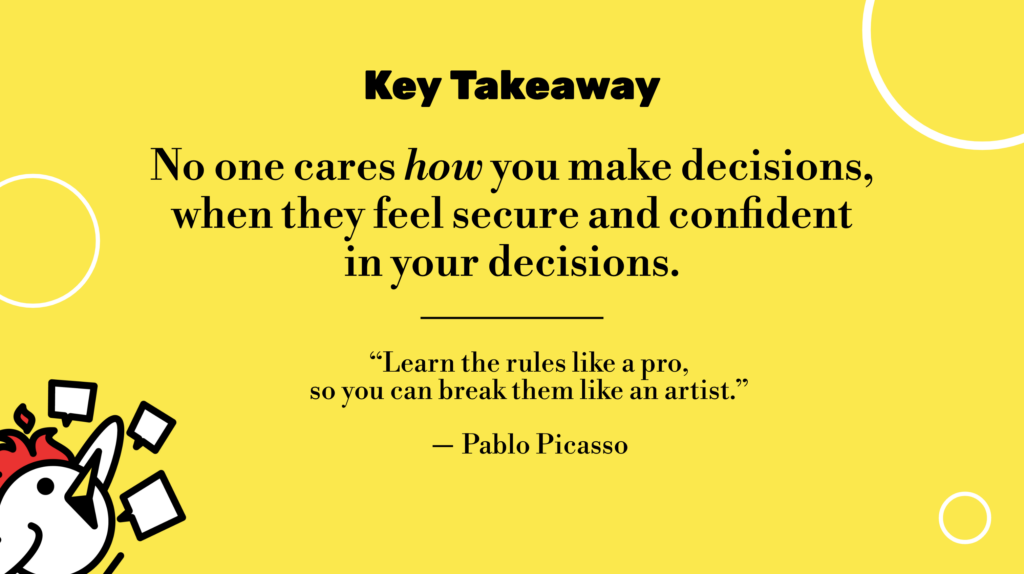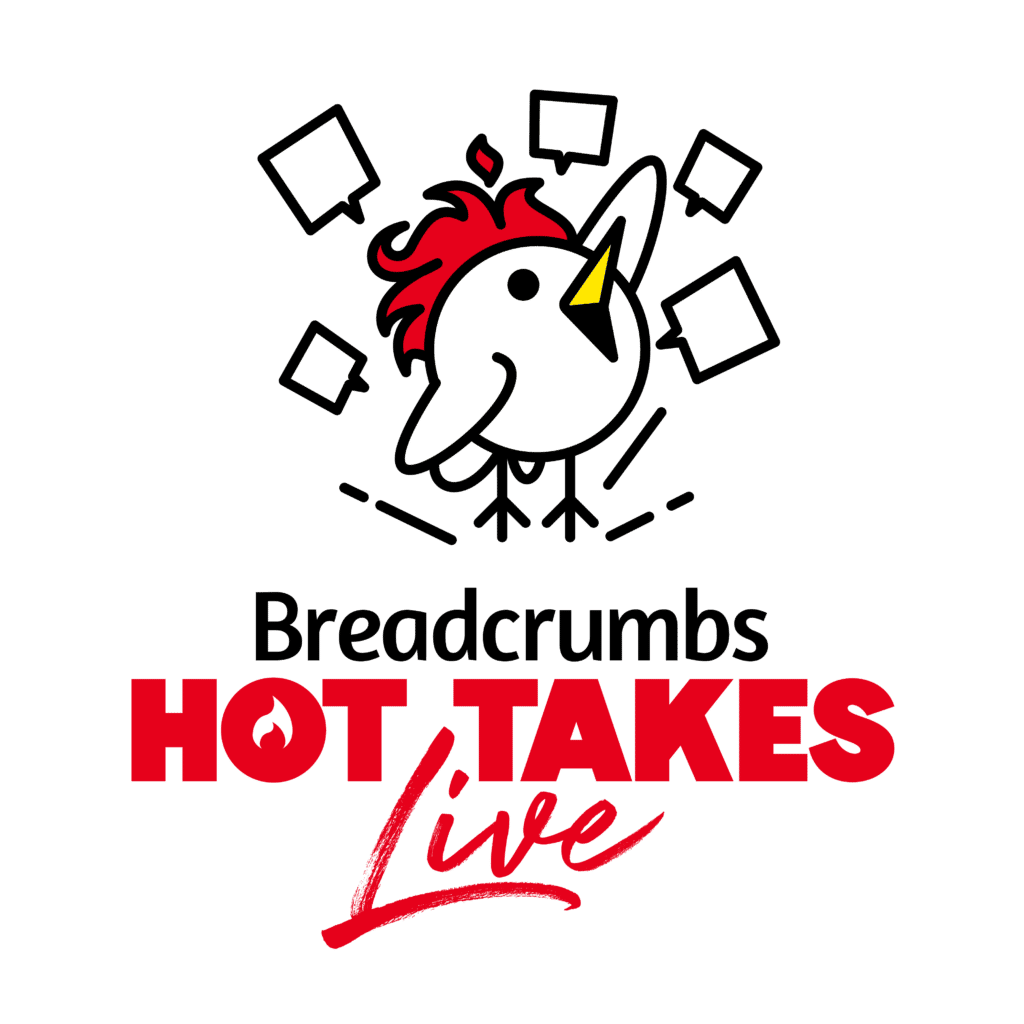If AI is replacing content writers, then maybe we should be making ops decisions with fidget spinners.
Right?
Well, maybe it’s not that extreme after all.
Join us as Thomas Knoll, Strategic Advisor & Executive Coach at Revelry.co shows us how to get out of decision paralysis with fidget toys for ops.
[Transcript] How To Use ‘Fidget Toys’ To Make Ops Decisions
Armando Biondi
Let’s open up the Ops stage officially with Thomas Knoll; Welcome, Thomas!
Thomas Knoll
Hi, I can’t believe I’m like you put me in this spot. I don’t know what you were.
Armando Biondi
Yes! You’re like the first one. Don’t mess things up, please. All right, it’s gonna be great. So, Your session is ‘How to use fidget toys to make Ops decisions.’ Cannot wait to hear more. The stage is yours.
Thomas Knoll
Thank you so much. It’s really an honor to be here. This sounds funny and silly, and I love it, because it’s going to be almost the opposite of the great keynote that you had, which was dense, very professional information. This is a whole different thing; this is a game.
Just a quick to get into me; currently, I’m a strategic advisor and executive coach. I work with companies and startups, and founders. I do that at Revelry; where I’ve been also CEO for the past six-seven years and buried in Ops. Now we have a great team who’s taken over all of that. I didn’t have any interesting facts about myself, so my seven-year-old wanted me to tell you all that wombats poop cubes, so now you have to know that too; you’re welcome.
So, the background of this is; decisions are so hard. I don’t know if you’ve experienced this, but I do. They feel hard, like high stakes, if you do make the wrong one–you get into a big long drug-out debate about what you’re supposed to do.

They are expensive; they’re time-consuming, the more people have to kind of get involved and weigh out all the sides… and every minute that you’re spending in the middle of trying to make the right decision about one thing; it’s this massive opportunity cost for all of the other things that we could be doing or deciding at that same time.
So how do we short-circuit that and fix it?
Here’s the deal I believe that there’s a shortcut to making decisions, and it’s a dartboard. I call it hanging up the dartboard. When you put something out there as fast as possible, that could be the solution, and let people start throwing darts at it. Like, “No, it’s not like that. It’s a little bit more like this.” It makes it so much easier to make that decision, and I have a couple of examples, right?
One is called “What are we going to eat tonight,” and this is also a metaphor; just to be clear, when you get buried in the decision, “Oh, what are we gonna eat tonight?” ‘What do you feel like?’ ‘I don’t know what do you feel like?’ ‘ well, you just decide.’ ‘I don’t know what, why don’t you decide.’
Instead, I have an answer every single time I get asked what we should eat tonight; the answer is Taco Bell. That’s it. And, immediately, everyone has an opinion about what we should eat tonight. Sometimes it’s ‘Okay, fine, let’s do Taco Bell’, but most of the time it’s “I don’t want Taco Bell, I want Italian.’ Obviously.
And here’s another one; you see these pictures of Steve Jobs with the black turtleneck and the jeans. It looks like he went for some black shoes there for a little while, but usually, they were just like the white shoes; that’s what he wore all the time. He didn’t think about what he was going to wear; he had much bigger decisions to make, so on things that don’t need to be so hard just having that default decision.

Another one is called “Hell Yeah or No” from Derek Sievers. Every decision we make it should be a, ‘Yes, absolutely, we’re gonna do this’. Or it’s a ‘no if I don’t feel like it’s a Hell Yeah’. Then it’s just a no instead. Those aren’t as practical to operating in our businesses, so I want to give some more, very real ways we can use these in our own business, right?
So one is Slack teams messaging; whatever tools you have, they all have Integrations and simple ways to push notifications and build Bots that will tell you stuff so we can have something that’s like when the conversion rate on this thing drops below X, the bot is going to throw a big, huge, loud message apps; and say like ‘everything’s breaking and you need to fix this right now’.
It doesn’t matter if it’s not the worst thing in the world or if it’s not breaking; knowing that this bot is going to blast the channel if it ever dips makes it easier to make decisions that will not trigger that. Or, when it does that, we know that, like, I’m just gonna stop and do whatever it takes to fix that thing. It’s kind of also like PagerDuty; it’s a service that does this, kind of, more in the tech space, but you can also apply this to operations.
Another one we have a Services business, and we have in-state employees and out-of-state employees, and it impacts a number of different things across the business, and we always want to have the best people on the team regardless of where they live. So it can be challenging whenever we have to make a decision every time of where this is, you know, how this hire is going to impact and if people move and how that’s going to impact.
So the fidget tool is just a little basic sheet, in-state out-of-state ratio, it’s supposed to be this percent, and by default, the answer is the decision is going to change this ratio, the tool says like you know it’s like shaking a magic eight ball; like ‘no! you can’t do that.’ Right. Now we can have a conversation and change our minds, but the tool just makes the ‘we’re having Taco Bell for dinner’ type answer.
Another one is like a new pricing trigger. You know, again, a lot of different things can impact the kind of ideal pricing for the services, so just a simple tool that, all it does is say, when these things happen, it’s going to spit out like ‘hey pricing should be X now’. It doesn’t automatically roll out new pricing to the business, but it does just tell us, ‘Hey, this is what the pricing should be.’
Then it’s much easier to have a conversation, ‘But well, the timing isn’t right, there are some things this model doesn’t take into account, and we should change it this way,’ or it’s just like a simple, ‘Hey, that triggered now we know it’s a thing do this step to go roll out the new pricing.’
Another one is a tool from Amazon; they’re famous for it. I don’t know if they made it, right, but this is It’s called ‘Write the PR release’. So, this one’s not a spreadsheet or a bot; this one’s more like a writing exercise where you want to launch a new program, a new plan, or a new product.
Step one is to write what the PR release is going to be, share that with the team; and that’s like this tool that helps everyone way more quickly get on the exact same page about what the vision and the outcome of this whole investment in this project are going to be.
It’s going to sound like this when we announce it, and that makes it a lot easier to challenge that pushback, ask the right questions, or go like, ‘Hey, we’re all on the same page; we can do this’.
Two little tips down here, these tools are not supposed to be perfect; they’re not supposed to be super high-fidelity and infallible. They’re supposed to just be a quick and dirty little tool like, ‘We’re having Taco Bell for dinner’ that forces a conversation much more quickly than ‘Hey, everyone, let’s get in a room and ask what should we do now’.
The other one is especially if you’re using a spreadsheet for this; again the numbers don’t have to be perfect or right. They can be directionally true. They can be kind of based on just rounding roughly what the impact of things would be; that’s okay. It doesn’t have to be perfect; the tool itself needs to be kind of internally consistent. It’s like a science fiction novel; it imagines the world very differently, just all of the books in the series need to stick with the same imaginary physics that doesn’t exist here. These tools need to just be internally consistent where if these things are true, then it would react this way.

The main thing here that I want to take away from this is that when people feel like decisions are hard and aren’t sure how they’re made, whether we’re going to make them correctly or on time, what I found is that these silly tools are super helpful even though they’re so silly.
They work because everyone feels like the decisions and the outcomes are good. That we’re able to make decisions more quickly helps me feel more confident in the whole process. We don’t have to sit in the spot so long where it’s like, ‘Are we gonna make a decision? What is the right decision?’

Hot Takes Live
Replays
Catch the replay of Hot Takes Live, where 30 of the top SaaS leaders across Marketing, Sales, and RevOps revealed some of their most unpopular opinions about their niche.
These leaders shared what lessons they learned and how they disrupted their industry by going against the grain (and achieved better results in the process).
Armando Biondi
Lovely Thomas! I appreciate it. Well, If there are questions from the audience, you can type them in the chat, and we’ll pick them up from there.
Thomas Knoll
Great!
Armando Biondi
I think there are a couple of reactions to your session that are particularly thought-provoking for me. Number one, you’re essentially offering this idea that it can be a technology tool, but it can also be like a behavioral tool. It essentially triggers to stimulate a behavior or a reaction, essentially that are relatively low stakes yet going somewhere as a starting point. Would you say that that’s fair?
Thomas Knoll
That’s the real thing, right? It’s like, ‘Hey, what should we do?’ is just a heavy blanket.
Armando Biondi
It’s like, oh my God, that’s a special request.
Thomas Knoll
I’ve got this little spreadsheet that says that we should double our pricing, and everyone’s like, ‘No, we shouldn’t. It should be only 70 percent.’
Armando Biondi
Then you have a conversation going!
Thomas Knoll
Immediately, right.
Armando Biondi
I love that it’s actually a way to avoid the kind of analysis/paralysis type of thing, right? Where you spend like days, weeks, months. Thinking about something and packaging something, theorizing, strategizing about something, and then maybe like you don’t really get to a meaningful enough decision or a meaningful enough outcome.
Thomas Knoll
Mmm-hmm, and there’s a risk to put yourself out there sometimes with trying to make a very serious recommendation and like, ‘What are people gonna say, how are they going to react?’ Right? If it’s framed in a like ‘You know what? We should just go do this.’
Armando Biondi
Right.
Thomas Knoll
It’s less scary to go ahead and make this recommendation because people are going to respond to it like, ‘You know, like actually, that’s not so crazy.’
Armando Biondi
Right.
Thomas Knoll
Or you know like, ‘That’s silly. It should be right there.’
Armando Biondi
‘Are you crazy?’ or, ‘Well, maybe that’s not so crazy.’
Thomas Knoll
Exactly!
Armando Biondi
Yeah, yeah, I love it! So question; because essentially, this whole thing hinges on the fact that there is someone willing to be that person, which, like for your company, is you, clearly, but like how? And you offered a few options to try this out for other people?
Is there something special underlying this? Do you need to be comfortable being wrong, or do you need to be comfortable with people thinking that you’re crazy or don’t necessarily…
Thomas Knoll
No, because that’s the other piece of this; we’re also offloading the crazy from one personality right onto these tools, right? That’s like we start rolling our eyes about the in-state, out-of-state ratio bot.
Armando Biondi
Right, right.
Thomas Knoll
Like, instead of the person who feels like they have to like always be the bad person or the good person or…
Armando Biondi
You don’t need a person because now the tool is this idea.
Thomas Knoll
Your tool takes on the thing that we’re all kind of like throwing darts at and be like,’ Ah tool; you’re silly.’ It takes the pressure off the person.
Armando Biondi
Yeah, it takes the pressure off the person from the crazy idea from the triggering concept/proposal.
Thomas Knoll
Yeah, it’s the tool.
Armando Biondi
I love it! I love everything about it! I promise. Thank you so much; this was great. Thank you, Thomas, and we’ll see you soon.
Thomas Knoll
Thank you so much. It’s so good to see you.
